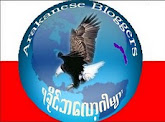Rakhine
| | |
Rakhine State (formerly Arakan) is located on the western part of Myanmar between RakhineYoma (Mountain ranges) and bay of Bangle, and bordered with Bangladesh. Rakhine State is narrow coastal region. Sittwe is the capital city of that state. Having an area of 36,778 km and the population is about 3 million. Rakhine offers some of the richest archaeological sites in South-East Asia. The Rakhine Coast, though generally rocky, has some lovely beaches. The average temperature is about 29' C during the summer and about 21' C in the cold season. The whole region receives heavy rainfall (more than 500 cm a year). Storms, originating in the Bay of Bengal, may visit the region from October to May. Sittwe, Kyaukpru and Thandway also have air links with Yangon.
Sittwe
| This port city of the Rakhine State sits at the mouth of the Kaladan River where it empties into the Bay of Bangal. Off shore delta islands form a wide protected channel that has served as an important harbour for many centuries. The city started as a trading port around 200 years ago and further developed after the British occupation of 1826. International trade alone the coast bloomed during the British era. Two huge cargo steamers a day plied back and forth between Calcutta and Sittwe. |  |
Attractions
Payagyi Temple
This temple is situated in the centre of town and features a large plain shed supported by pillars decorated with glass mosaic. A large seated Buddha image was cast in 1900 in the Rakhine style with the royal costume common to many Rakhine images. The face of the figure shines with gold, while the rest of the body is of bronze.
Buddhist Museum
This modest two-storey museum is the best place in Myanmar to view Rakhine Style Buddha images. The collection here represents a rare instance of historical preservation. Most of the images are under a meter in height with the royal attire common to Rakhine Buddhas Images. The majority dates to the Mrauk U period, while a few date as far back as the Wethali era and are made of bronze, silver, quartz or alabaster. There are also some Indian Buddha images and Hindu deities on display, a few Thai and Japanese Buddha statues, silver coins from the Mrauk U era, clay pipes, terracotta votive tablets and engraved astrological charts. Entry is free.
Mrauk U
| The City of Maruk-U is situated 64 km upstream to the northeast of Sittwe. It lies between Laymyo and Kaladan rivers. The city is surrounded by mountains. Mrauk U is the ornament of Rakhine culture. Its name suggests the fulfillment of endeavors. Between 1430 and 1785, it was the last capital of the powerful Rakhine King where the Rakhine culture had it full bloom. Maruk U is fast becoming a tourist attraction. Many places of interest the travelers can see. The most worth-seeing ones are the Shittaung, the Andaw Thein, the Dukkhan Thein, the Koethaung, the Laymyetnha and the Shwe Daung Pagodas, the travelers can go there by air, water, and land. You can visit if you wish to visit Waithali, Parin and Launggyat, which were the oldest Kingdoms in Rakhine History. |  |
The Shitethaung Temple
| The temple was built in 1536 AD by King Mong Ba Gree to commemorate the victory over the twelve provinces of Bengal and the Portuguese marauders who came to make assault on the capital. For this reason, the temple is also called the "Temple of Victory". The first terrace is 40ft high. Their walls are built with stone blocks. On the first terrace, one may see the Sunrise and Sunset temples in their miniature sizes. It is said that these two signify the power of the donor-builder of the temple King Mong Ba Gree in the sense that the sun never sets in his territory. The main shrine has a gallery around the structure .The shrine is said to encase 84,000 holy relics of the Blessed One and is dedicated to the 84,000 future Buddhas. After rounding off the number, the shrine in time came to be called the Temple of Eighty Thousand Images. The temple is a cave hall surmounted by a main Stupa and twenty-six smaller Stupas surrounding it. Shitethaung temple is in some way a cultural museum of Rakhine Mrauk-U Period. Inside the bowl or relic chamber, there are enshrined relics, a variety of the Buddha and his disciples. The size of the temple is 160ft in length, 124ft in breadth, and 86ft in height. One should take time to study it, as his sojourn in Mrauk-U may not be fully fulfilled without visiting it. |  |
The Anndaw Thein
| About 90ft north of the Shitethaung Temple stands Anndaw Thein or Temple of the Holy Molar Relic; brought from Ceylon (Sri Lanka) .The temple has an octagonal design made of pure sandstone block. The main Stupa, surrounded by eight smaller ones, is on the upper platform. King Mong Raza Gree rebuilt in 1596 encasing the original pagoda built by Mong Hla Raza in 1521. |  |
Htukkant Thein
| Going west from the Ratanabon Pagoda one reaches Htukkant Thein Temple, situated on the height of 20ft. One has to go up along eighteen steps of the stone-stairs. The leveled hill is 204ft north to south and 260ft east to west. The form of the pagoda is like that of the Shitethaung Temple. The donor-builder is King Mong Phaloung, who erected it in 1571. Htukkant Thein Temple is museum of traditional costumes of Mrauk-U period. The figures in the temple epitomise the various Mrauk-U period costumes and ornaments. | |












0 comments:
Post a Comment